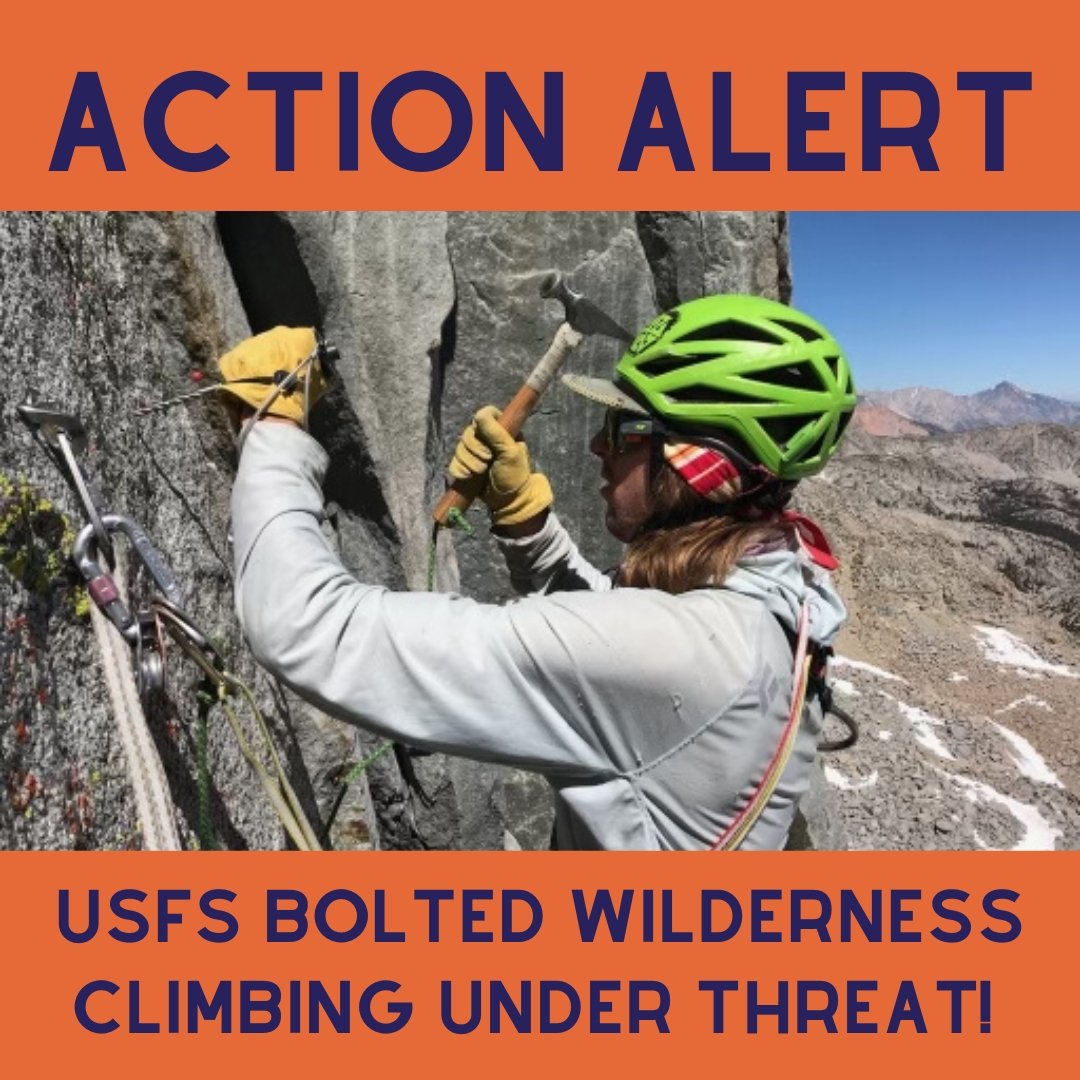Your Comments are Needed to Preserve Safe Climbing on Public Lands!
Responsible climber hand drilling a bolt in the Inyo National Forest Wilderness.
The United States Forest Service (USFS) and National Park Service (NPS) want to limit the installation and maintenance of fixed anchors, bolts, pitons, and even slings on public land. Besides making climbing less fun and limiting new route development, this will cause an increase in climbing accidents, resource degradation, and use vital volunteer Search and Rescue (SAR) resources. We need you to tell the USFS why the proposed directive FSM 2355 is bad for climbers and the public at large.
This directive will impact favorite Sierra Nevada crags, such as the Incredible Hulk, Tuolumne Meadows, popular regions of Pine Creek, Rock Creek, Bear Crag, Cardinal Pinnacle, and many other other areas across the US!
This comment period is open until Friday, January 16th, 2024, at 11:59 Mountain Time.
BELOW ARE THE BISHOP AREA CLIMBER COALITION’S RECOMMENDED COMMENTS FOR USFS AND NPS.
PLEASE SUBMIT ANY COMMENTS YOU AGREE WITH, OR COPY AND PASTE ALL!
Amid increasing usage of wilderness climbing routes, prohibiting service and installation of pitons, bolts, slings, and other fixed hardware would create a worsening public safety issue.
Rappelling is the primary cause of death in climbing accidents. When climbers rappel, they rely on a single anchor, and anchor failure during rappelling often results in death.
Prohibiting the maintenance of anchors or placing bolted anchors increases the risk of anchor failure.
Without the ability to leave behind equipment or modify existing slings or pitons, climbers will be encouraged to trust the existing gear left exposed to weather over the years.
The proposed directives FSM 2355 will exacerbate an already significant threat to the climbing public who use USFS wilderness to climb.
Aging hardware makes climbing routes and descents less safe, which causes more accidents. This would increase demand on already overworked volunteer Search and Rescue (SAR) organizations.
The new directives will make existing routes more hazardous by discouraging maintenance of bolts and anchors.
Volunteer SAR organizations are overworked because of increasing usage of wilderness. Proposed directives FSM 2355 would create even more demand on SAR.
Rappelling off of bolts or fixed anchors is often the only option for climbers to self-rescue before activating SAR resources.
The proposed directives would prevent climbers from safely retreating from routes without SAR rescue, for example during inclement weather
The language in the new directives does not clarify whether volunteer SAR members would be permitted to place and determine the location of emergency rescue bolts.
Section 2355.03 paragraph 7 states that local government officials may determine if hardware is necessary for emergency purposes. However, volunteers typically make this determination with SAR groups. This language opens the possibility that SAR volunteers might be acting illegally while performing normal rescue operations. Volunteer SAR operates the majority of rescue operations in the Sierra Nevada mountain range.
Bolts and fixed rappel stations prevent resource degradation in fragile alpine environments.
Prohibiting fixed anchors encourages climbers to rappel off of trees and bushes, which can eventually kill cliffside vegetation.
Bolted anchors reduce trampling and social trail creation in delicate alpine environments by directing all climbers to a single location.
Proposed directive FSM 2355 will encourage the creation of dangerous new routes.
Discouraging bolt placements will make certain belays more dangerous.
On wilderness routes, bolts are already placed sparingly. In situations where no removable gear can be placed, bolts are placed to prevent catastrophic falls. Prohibiting these bolt placements will lead to more catastrophic falls in the wilderness and more SAR rescues.
FSM 2355 has no plan to support increased staffing to document all existing hardware and enforce these regulations.
Many routes require rappelling in some form.
Rappels typically require leaving behind some form of equipment
In the Wind River Range (Shoshone National Forest) climbers are encouraged to only leave behind gray, rock colored slings, and to clean-up any old slings left behind under boulders.
Even this hardly visible, self-regulated form of descent would be not permitted under the proposed directive.

